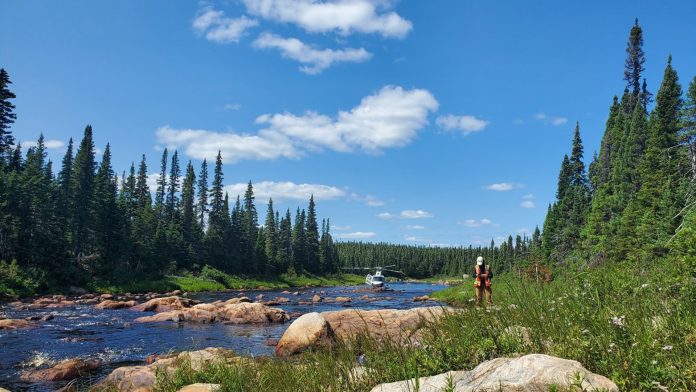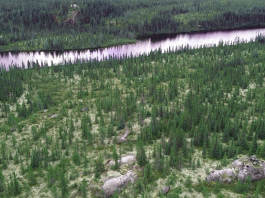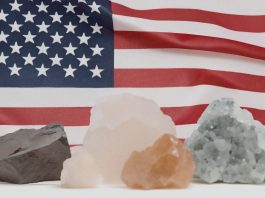Utilising innovative exploration methods, Brunswick Exploration has made significant progress in 2024, uncovering high-grade spodumene deposits vital for meeting projected lithium demand.
As governments at all levels worldwide announce lofty targets for decarbonising our society, global markets for metals and minerals deemed critical for the green energy transition have shifted significantly. Metals once overlooked now find themselves in high demand. Lithium is among these critical technological metals.
Over the past years, the demand for lithium has skyrocketed. The surge is fuelled by the demand for electric vehicles (EVs), whose lithium-ion batteries require considerable amounts of this critical metal. Here in North America, we have seen major investments in both new and existing EV battery plants, positioning lithium as a key part of the modern green economy.
These developments have been met with well-deserved enthusiasm and support. However, a glaring question needs to be answered: where will all this lithium come from?
As demand escalates and current lithium mines progress through their anticipated operational mine life, it becomes increasingly clear that we do not currently have sufficient known lithium resources to meet this demand. The World Economic Forum expects demand to reach over two million tons a year by 2030, and our deposits currently only produce ~130,000 tons per year. It is therefore crucial for us to find new deposits and to find them as quickly as possible.
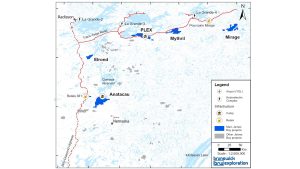
The Brunswick Exploration approach
Brunswick Exploration (BRW) is based in Montréal and is Canada’s largest grassroots exploration company. It has the largest land package of staked claims across the country.
Our approach is to conduct large-scale grassroots exploration aggressively and systematically for hard rock lithium in Canada so that we can find as many deposits as quickly as possible and solidify Canada’s role in supplying the global markets with the resources needed to decarbonise effectively.
What drives us at Brunswick Exploration is not just our expansive exploration ambitions but notably our efficiency and effectiveness in this field. We are able to explore vast swaths of land over a relatively short period of time using state-of-the-art technologies, including portable XRF-LIBS multi-element geochemistry pegmatite discrimination criteria and satellite imagery. These allow us to assess an area in minutes and proceed to the next, covering more terrain in a shorter period than any other company in Canada.
The year 2024 was one filled with achievement for BRW as we continued multiple drilling and stripping programmes across Québec, all the while maintaining our trademark aggressive grassroots lithium prospecting in new regions of Canada and Greenland. We successfully completed our drilling exploration programme and identified the top formations that hold the best potential for lithium.
Our current flagship project, Mirage, was home to an expansive drilling programme throughout the year. A prospecting team was also sent during the summer of 2024 and revealed new opportunities for lithium-rich spodumene on the site using till and boulder mineralogy. Grassroots lithium prospecting expeditions in Greenland and Labrador perpetuated our trademark aggressive approach in regions of high potential.
The Mirage Project
Now a pillar of Brunswick Exploration’s portfolio, Mirage appeared as a site of major potential when, in the fall of 2023, BRW discovered several high-grade spodumene outcrops over a 2.5km trend and an adjacent 3km spodumene bolder train with different mineralogy than the discovered outcrops.
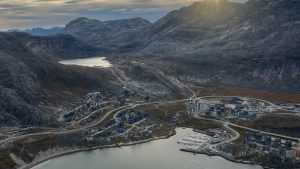
The property includes 427 claims with a total surface area of 21,230 hectares (staked and optioned claims), located 40km south of the Trans-Taiga Highway in Québec’s James Bay region.
In 2023, we completed a 5090m drilling campaign, and it has yielded significant high-grade lithium results, including bonanza grades of up to 2.57% Li2O over 25.8m (MR-1) and substantial thick intercepts, reaching up to 50.6 metres at 1.06% (MR-3), all above a 100m vertical depth. As a result of these promising findings, BRW launched an extensive winter drilling campaign on 22 January 2024 and drilled about 7,000m.
The summer of 2024 saw extensive prospecting works on the site, which led to discoveries of spodumene mineralisation in boulders and till in unexpected regions. This raises questions as to the presence of new sources of lithium. To further investigate our on-site resources, a 5,000m drill programme launched on 23 July 2024.
The exploration potential at Mirage extends well beyond the currently known targets. Over 12km of untested strike potential remains, including a new spodumene-bearing outcrop discovered 3km northeast of the main dyke swarm. To date, only 60% of the targets have been drill-tested, revealing new blind discoveries of dykes (MR-3A) in the drilling process. The total extent of the known lithium trend at Mirage now spans over 9km and remains open in all directions, highlighting its significant potential for further discoveries and developments.
Greenland projects
Having strong ties to Europe via Denmark and recently the focus of the European Union delegation, which highlighted its critical mineral potential, Greenland has outstanding outcrop exposure, allowing for efficient and effective helicopter-supported prospecting. Pegmatites were staked based on preferred geologic environments, historical geochemistry, satellite imagery and historical mapping.
Importantly, there has been little to no exploration of lithium in the country. At the same time, it has significant potential for new discoveries and holds all key geological grassroots indicators utilised by the BRW exploration team. The license areas are near communities and tidal water, and there is a deep-sea port in Nuuk, capital of Greenland. These license areas span a total of 64,703 hectares divided up into two projects: one close to Nuuk and another near Paamiut.
In July and August 2024, BRW started a two-week programme near Nuuk, followed by a one-week programme in Paamiut, targeting historical beryl and tourmaline-bearing S-type pegmatites, some having anomalous geochemistry typically associated with lithium-bearing pegmatites.
The Nuuk project has one proposed mineral exploration license, consisting of five blocks, with a total surface area of 49,562 hectares. It is located between 10-90km from the capital of Greenland, Nuuk. The project holds 92 mapped and interpreted pegmatites that are between 500-8,800km in strike length. The area contains beryl and tourmaline occurrences as well as a historic pegmatite grab sample containing up to 3,700 ppm Rb and a K/Rb ratio of 9.5, already indicating the potential for very evolved pegmatites.
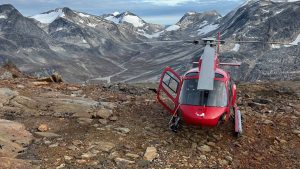
The Paamiut project has one proposed mineral exploration license, containing five blocks, with a total surface area of 15,141 hectares, located between 20-70km from the community of Paamiut. The properties hold 41 mapped and interpreted pegmatites that are between 500-4,400m in strike length.
Southeast Labrador project
The company has staked 55 licenses with a total surface area of 7,051 hectares, located near and in between the areas of Cartwright, Port Hope Simpson and the intersection of Highway 510 and 516 in southeast Labrador. Labrador has an extraordinarily strong mining history and currently hosts large-scale mining operations in the Wabush, Voisey’s Bay and Schefferville areas. Numerous pegmatite occurrences contain beryl and/or tourmaline, among other indicator minerals, highlighting the potential for evolved LCT pegmatites and lithium mineralisation.
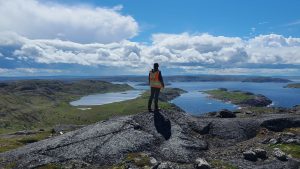
To date, the licenses cover 19 pegmatites measuring between roughly 500-2,000m in strike length. A ten-day helicopter-supported prospecting and mapping programme was launched in the summer of 2024. Its main objective was to assess multiple evolved S-type pegmatites containing beryl and tourmaline that had not been explored in any previous way. Results are pending.
What’s next?
As we move into 2025, our focus will intensify on advancing the drilling of our James Bay projects while continuing our aggressive approach to the exploration of hard rock lithium in Labrador and Greenland at an unparalleled rate.
The success of Western economies in their efforts to meet their decarbonisation goals depends critically on our ability to boost the lithium supply, particularly here in North America. The currently known lithium resources are insufficient to meet the demand for lithium, and Brunswick Exploration is committed to changing that.
With our innovative approach to exploration, it is no wonder that BRW is invited to conferences all over the world to share our story and has been named to the TSX Venture 50 for a second time in 2024 as one of the Exchange’s top-performing companies.
For more information about Brunswick Exploration, follow us on Instagram, X, LinkedIn and Facebook, and visit us at www.brwexplo.ca to sign up for our mailing list and receive all our latest news and developments.

